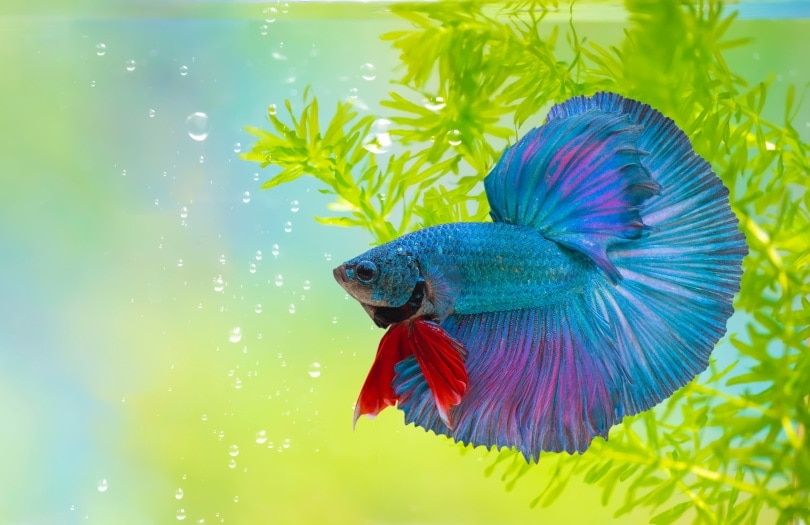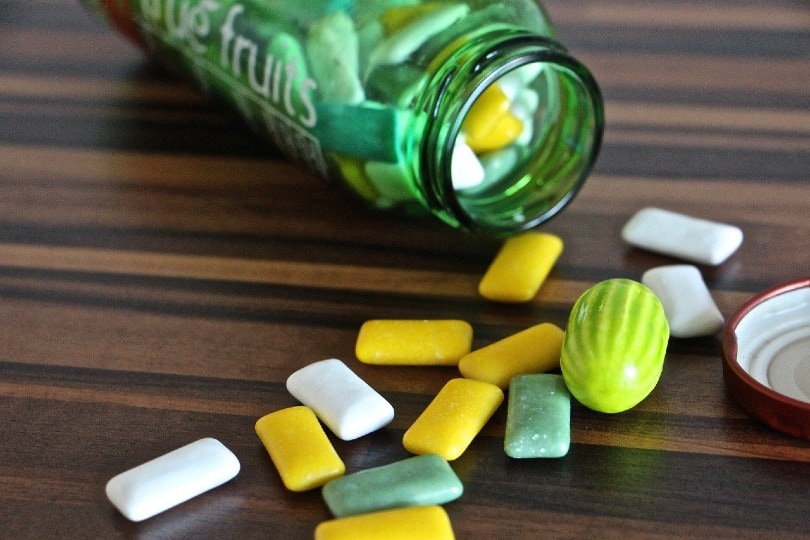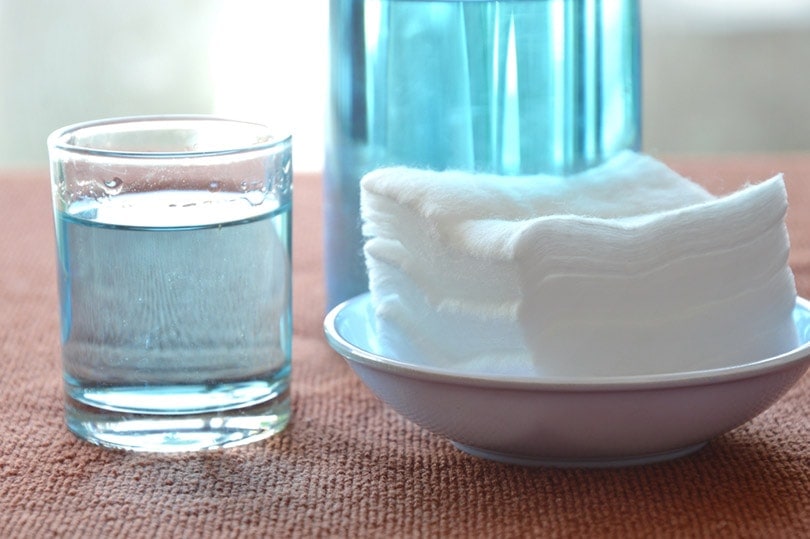Mastitis in Cats: Causes, Signs & Care (Vet Answer)
Updated on
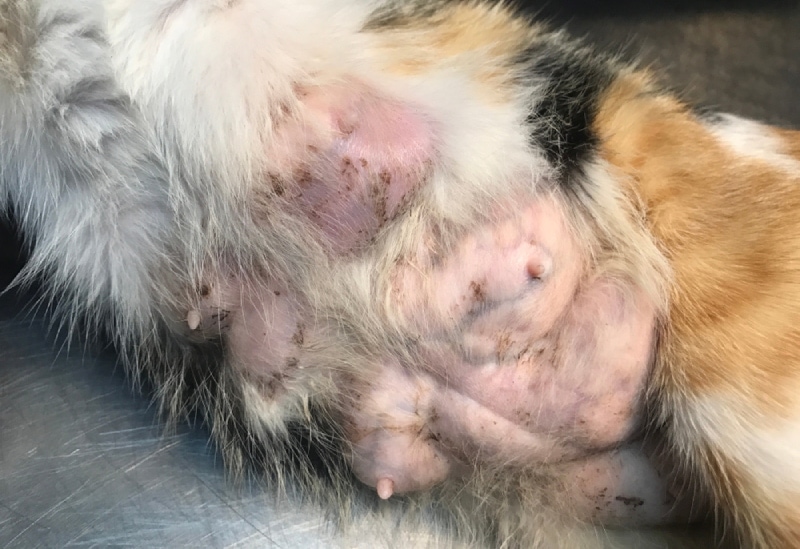
Click to Skip Ahead
Nursing complications aren’t very common in cats, but one worth knowing about is mastitis. While generally easy to recognize, treatment does require a trip to the vet. Cats that don’t receive prompt treatment may develop severe complications, and their kittens can suffer too, so here is everything you need to know about the condition.
What Is Mastitis in Cats?
The direct meaning of mastitis is inflammation of the mammaries. The mammaries or mammary glands are breast tissue or breasts, of which cats typically have six to eight total, three to four on each side of their chest and abdomen.
For cats, the inflammation in their mammary gland is also usually an infection, can be a painful condition, and if left untreated, can become a life-threatening infection in the rest of their body, known as sepsis.
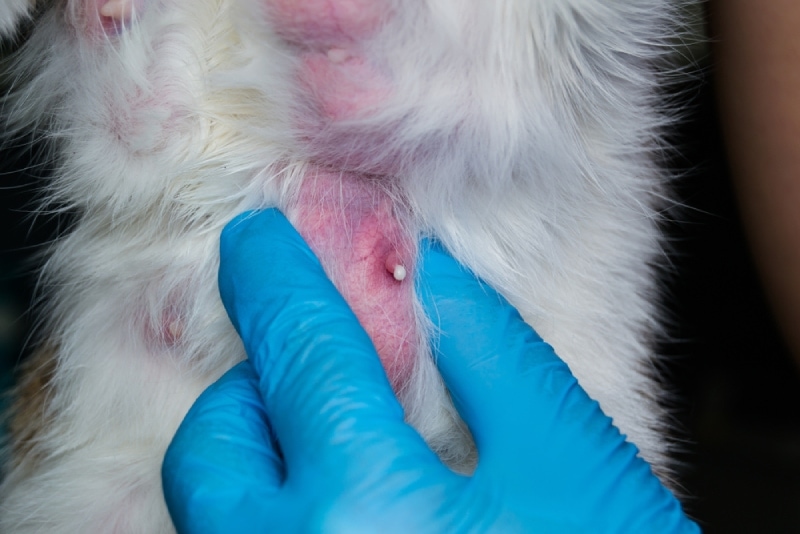
What Are the Signs of Mastitis in Cats?
Mastitis may show up in one mammary or more than one, even an entire chain. The affected mammary usually becomes a little swollen, a bit red and warm to the touch, and may have some blood tinge to the milk.
As mastitis worsens, the mammary can become significantly enlarged, a deep red, purple, or even black, the tissue in the area can start to die off, ulcerations may be seen, and the milk may have blood, pus or even be thick. Sometimes an area that appears like an abscess may break open from the side of a mammary.
While mastitis is usually just a little uncomfortable to direct touch in the beginning, it can become too painful to touch at all and lead to hiding, refusal to allow nursing, attacking kittens, refusing food, or even vomiting for the momma cat.
If the infection spreads into the blood and to the rest of the body, life-threatening fevers and organ failure can develop.
What Are the Causes of Mastitis in Cats?
Most cases of mastitis are caused by a bacterial infection. The bacteria can enter the mammary in a few different ways. Trauma from nursing is a common cause, as can be lying in unclean conditions.
Mammaries that cannot drain can develop mastitis. This can be due to low or suddenly stopped feedings from kittens or hyperplastic mammary tissue getting in the way. While hormones cause the mammaries to swell and lactate in preparation for labor and nursing, sometimes hormone imbalances can make this happen too much and lead to mastitis.
Breast cancer can also cause mastitis in either a nursing cat or one that doesn’t even have kittens at all.
How Is Mastitis in Cats Diagnosed?
Most cats with mastitis can be identified with just a physical examination. It may be necessary to test the cat’s milk for signs of infection or even to culture a sample to identify which specific bacteria is responsible and which antibiotic can treat it.
How Is Mastitis in Cats Treated?
Treatment varies for mastitis. In the early stages, and if bacteria isn’t involved, warm compresses, red cabbage compresses, and regular nursing or milk expression can fix the problem.
In most cases, cats will also need antibiotics and pain medication to treat their mastitis and keep them comfortable. Severe cases may require placing the cat in an e-collar, hospitalizing the cat, or even performing surgery to remove dead tissue if needed.
Cats that develop sepsis often need several days of IV fluids and medications to recover, though their prognosis is guarded, unfortunately.
Typical mastitis treatment allows the cat to go home and continue nursing her kittens, though the medication choices need to be screened for nursing safety in this case. When a cat is hospitalized, her kittens may be allowed to visit regularly or stay with mom, but more often, the kittens will need to be given milk replacer, and the mom will need her mammary glands manually expressed about every six hours while hospitalized.
How Do I Care for a Cat With Mastitis?

Mastitis treatment usually takes about two to three weeks, maybe a bit more in severe cases. Regularly checking the affected mammary for signs of improvement or worsening and expressing the mammary to check the quality of the milk is important.
In most cases, it is okay or even helpful for the kitten to still nurse as planned, as long as the medications mom takes are safe for the kittens. Careful monitoring of kitten weight is also helpful. Kittens may have gained weight more slowly when the mastitis set in since it limits their food supply, and returning to proper weight gain is a good indication that things are back on track.
Frequently Asked Questions (FAQs)
Can mastitis in cats go away?
While mastitis in cats usually has a great prognosis, it does usually require treatment and can get quite severe if left untreated.
Can you treat mastitis in cats at home?
If caught early enough, mastitis can often be treated from home. Even as it progresses, a trip to the vet for diagnosis and medication is usually needed, but the treatment still happens at home, which is great for both the mother cat and her kittens.
What does mastitis in cats feel like?
A mammary with mastitis will typically be enlarged, feel firm and warm to the touch, and bloody discharge or pus may come out when squeezed. Touching the area is also usually uncomfortable to painful, depending on how severe it is.
Can you fight mastitis without antibiotics?
This depends on whether the mastitis is caused by an infection or not. Non-infectious mastitis can be treated without antibiotics, but infection is the most common cause of mastitis, so antibiotics are usually needed.
Is mastitis an emergency?
Mastitis is only an emergency if it’s found when the mother cat is severely ill and can’t eat, is lethargic, can’t take care of her kittens, is weak, has a high fever, etc.
Can kittens get sick from mastitis?
Yes, in a couple of ways. At first, mastitis can cause weight loss or failure to gain weight if the kittens can’t get enough milk. In really young or debilitated kittens, drinking milk from an infected mammary that has bacteria in it can cause infection in the kitten as well. This is usually not a concern if the kitten is over two weeks old or if the mammary is being treated, as the bacterial load in the milk drops rapidly and is flushed out as they nurse.

Conclusion
While mastitis is painful, can affect both the mom and kittens, and usually needs treatment to get better, this condition still has a good prognosis. A couple of weeks of treatment is usually enough to clear everything up, and minimal diagnostics are needed to set up a proper care plan. Most cats can be treated at home for most—if not all—the treatment period, and kittens can generally keep nursing during this period too. Cats who develop sepsis and severe signs of illness have a worse prognosis and may require an extended stay in the hospital.
Featured Image Credit: M. Sam, Shutterstock



